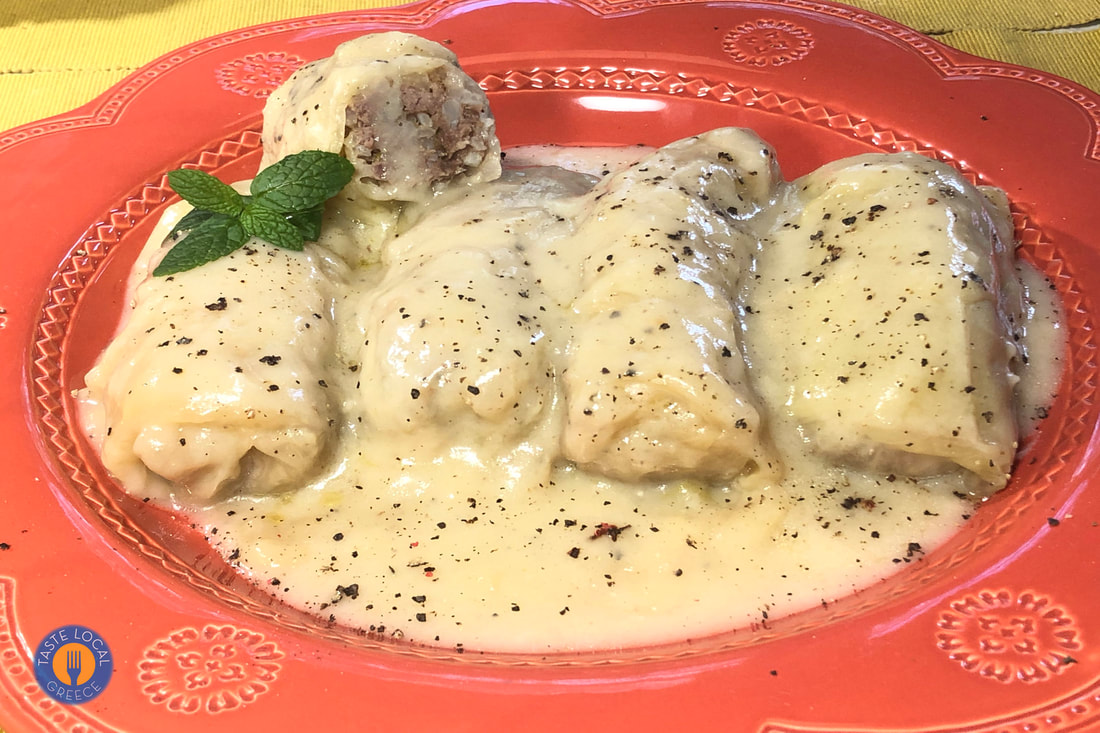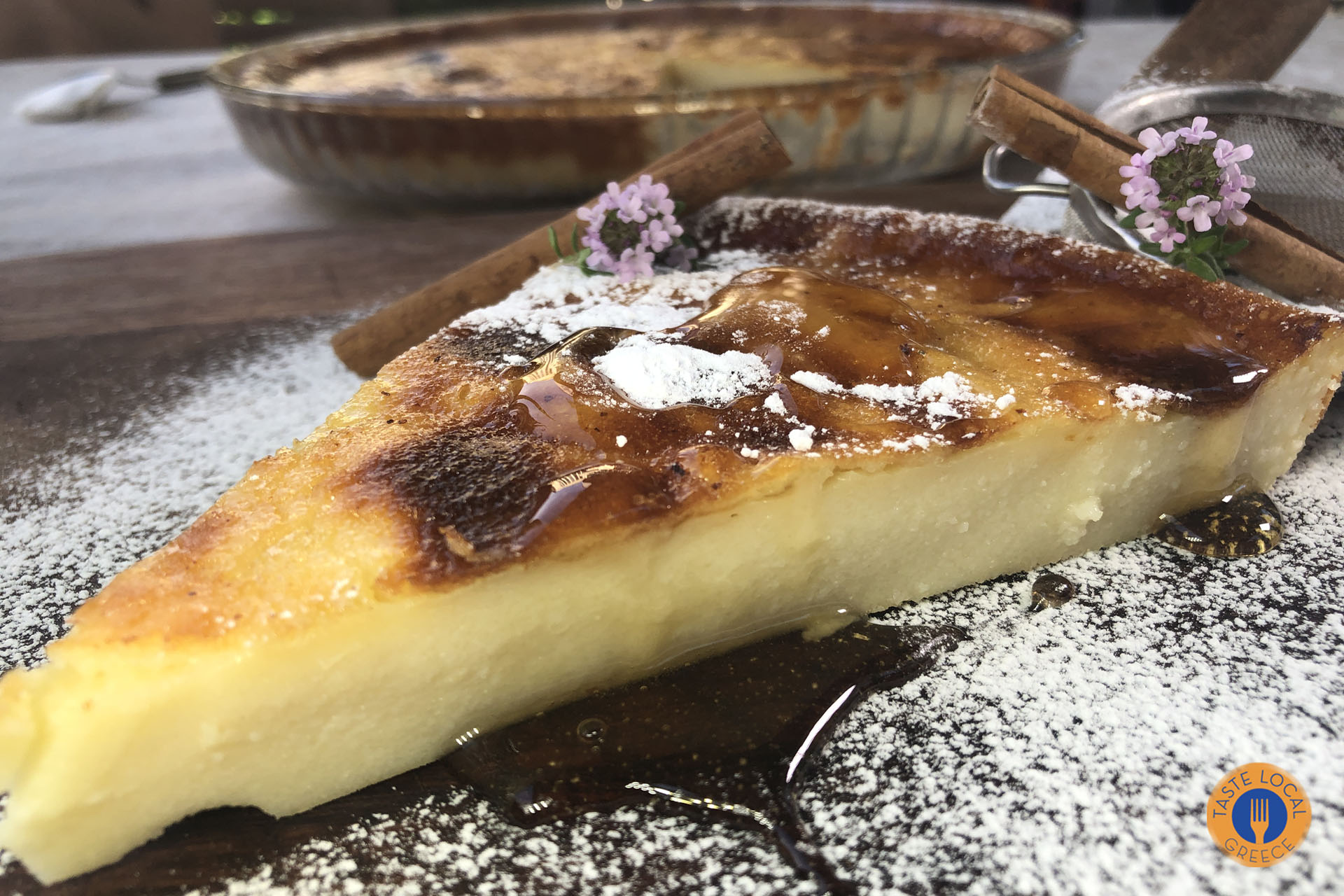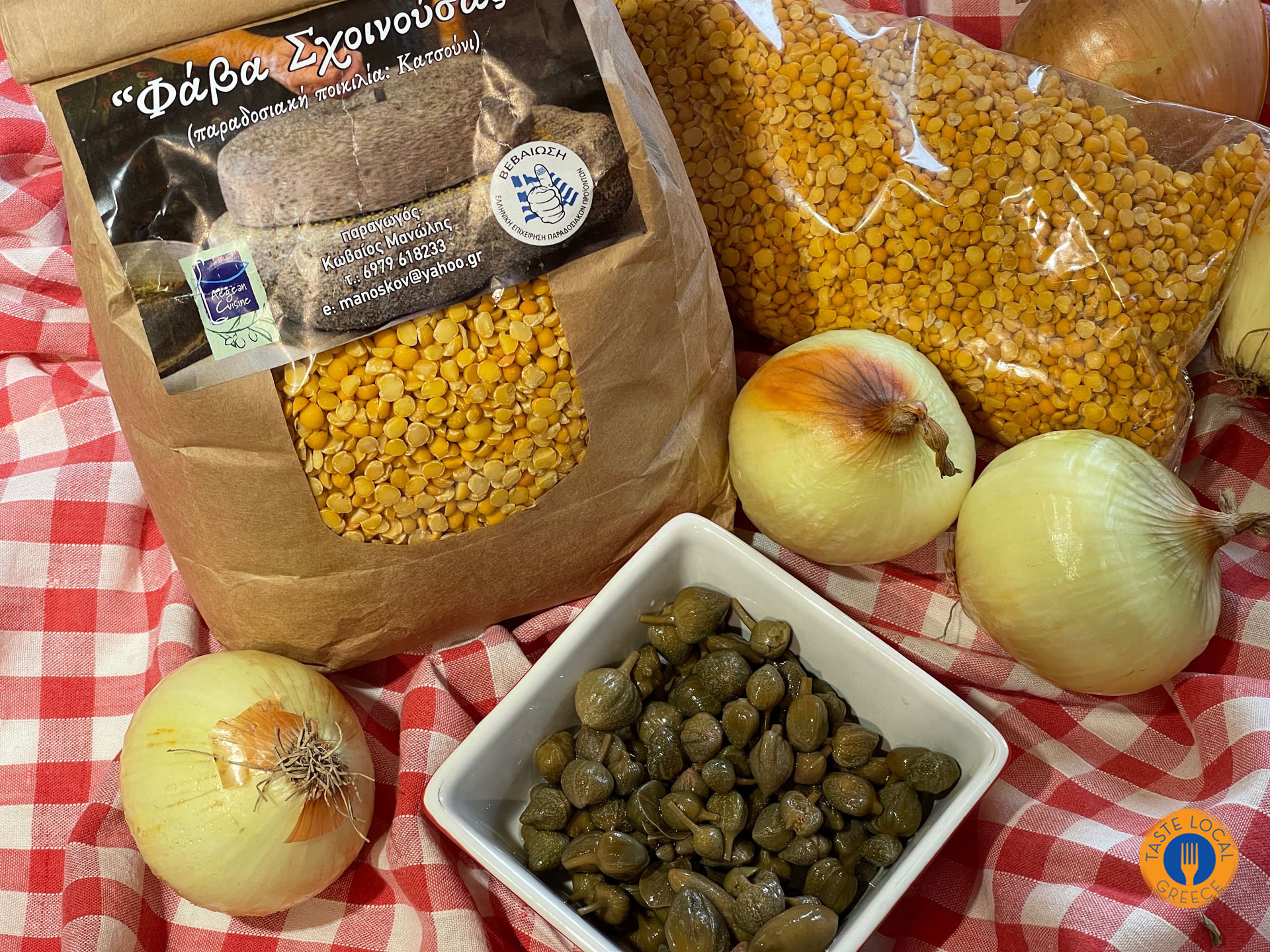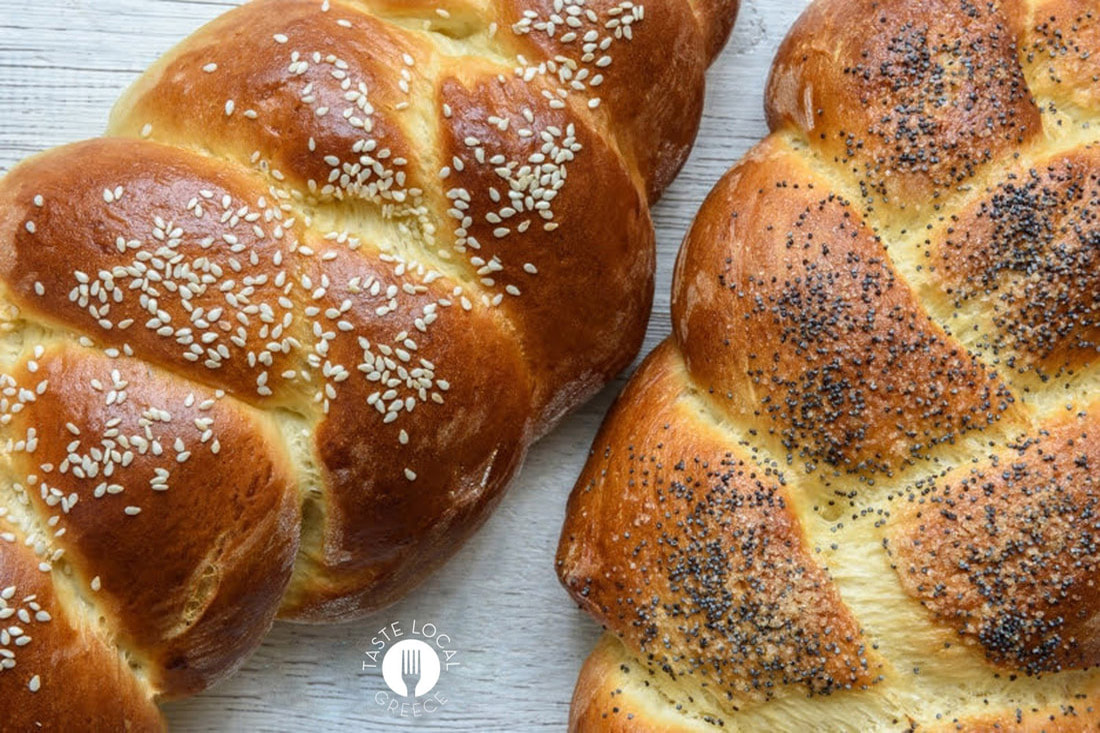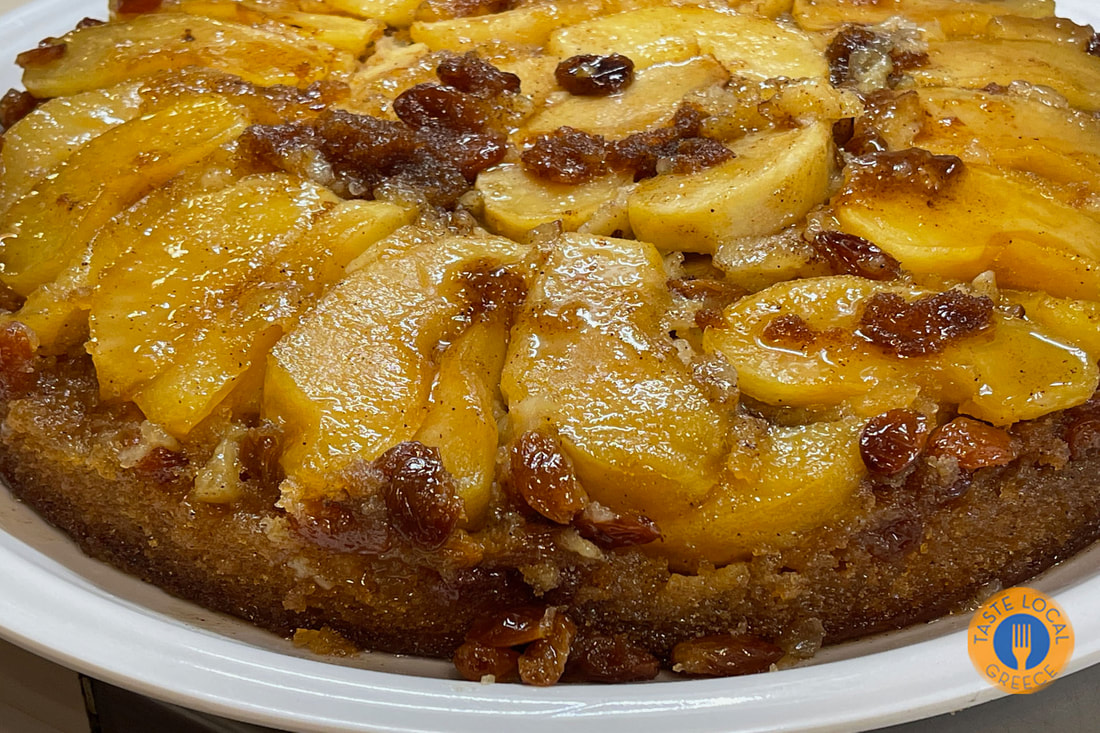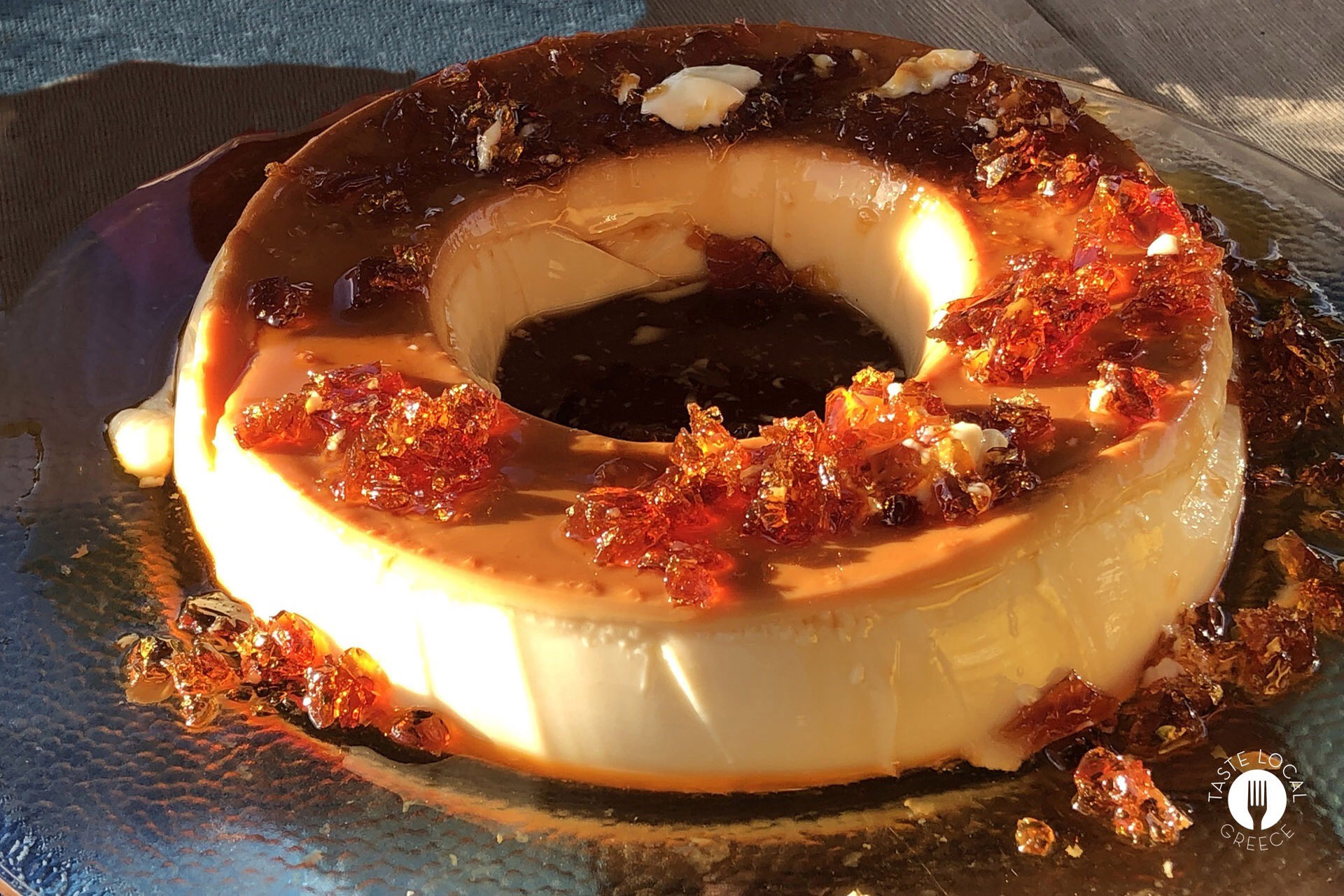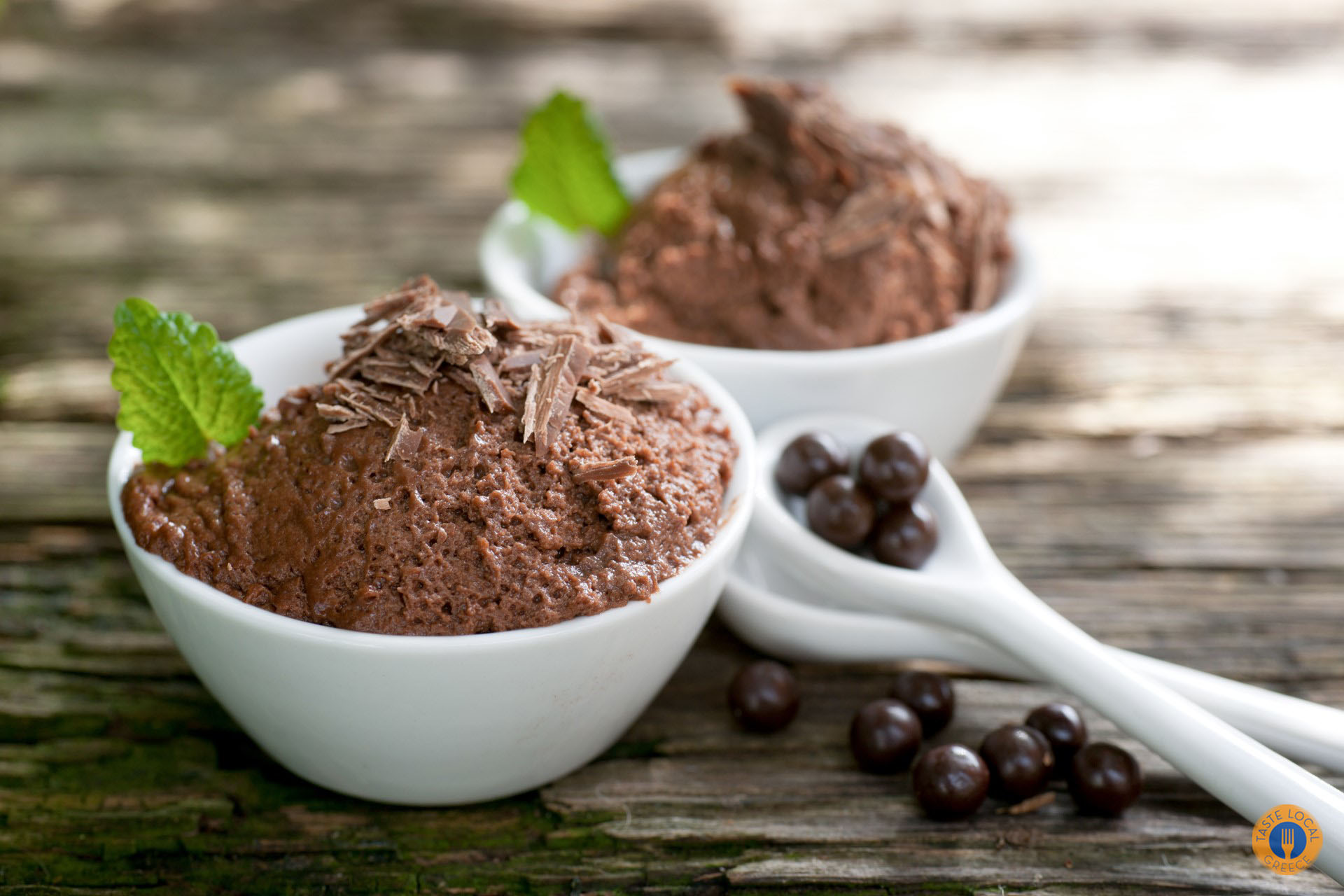When I hear the words traditional, flavorful cabbage rolls, what comes to mind are festive gatherings with fireplaces crackling, and beloved friends laughing around a table, clinking glasses as we exchange wishes. That mischievous cabbage roll, after all, has magical powers.
Thoughts
I began to reflect on this dish—prompted by my mother’s version, where she would add pine nuts and raisins, much like stuffed vegetables, something I never again encountered in the everyday Greek cabbage roll. And so I wondered: what does tradition really mean? What, in truth, is traditional cuisine, a phrase we now toss around so easily and adapt to our convenience? What makes a recipe worthy of being called traditional, and how different does this tradition appear from the cold North of Macedonia to the mild climate of Crete, with their different ingredients, flavors, and cultures? How has tradition changed—or rather, evolved—over time, shaped by influences from Asia Minor Greeks and Constantinopolitans, to Italians, Venetians, and Arabs? And how much was it transformed through centuries of Ottoman rule? These questions linger with me as I continue my culinary explorations.

One dish that has endured through the years and remains inseparably tied to Christmas is the cabbage roll. Beyond its taste, it carries deep symbolism: the cabbage leaves represent the swaddling clothes in which the Holy Infant was wrapped after His birth. It was among the most popular Christmas dishes in every household, especially after the annual pig slaughter when pork was plentiful. Alongside roasted pork, pork stewed with leeks and celery, sausages, and other pork delicacies, cabbage rolls stood proudly at the festive table. From Thrace, Macedonia, and Epirus, to Central Greece, the islands, and Crete, they remain a cornerstone of Greek Christmas tradition.
Of course, there are many differences in recipes, names, ingredients, and influences, depending on the region and its people. You may encounter them with or without egg-lemon sauce, as giaprakia or dolmadakia, wrapped in vine leaves, or as sarmades in areas with Pontic roots. Each place gives them its own name, its own spices, its own aroma. Yet if we look deeper, the philosophy remains the same: leaves of cabbage, lettuce, or vine tenderly envelop a filling of minced meat—most often pork, but sometimes lamb or beef.
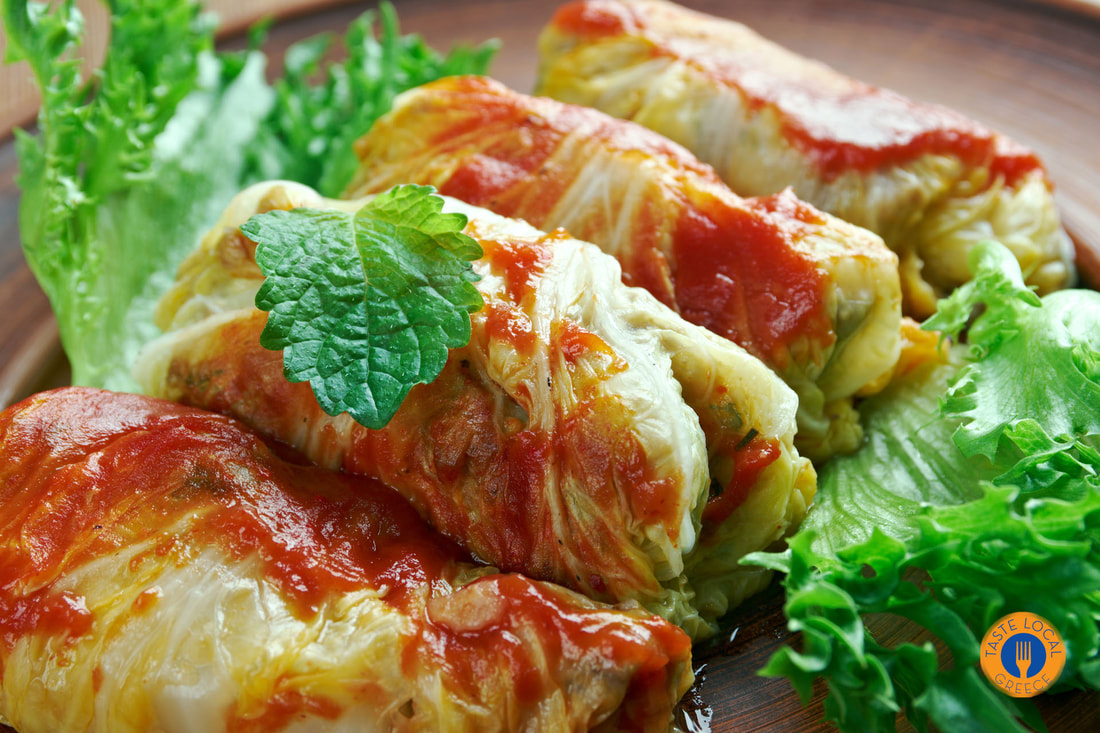
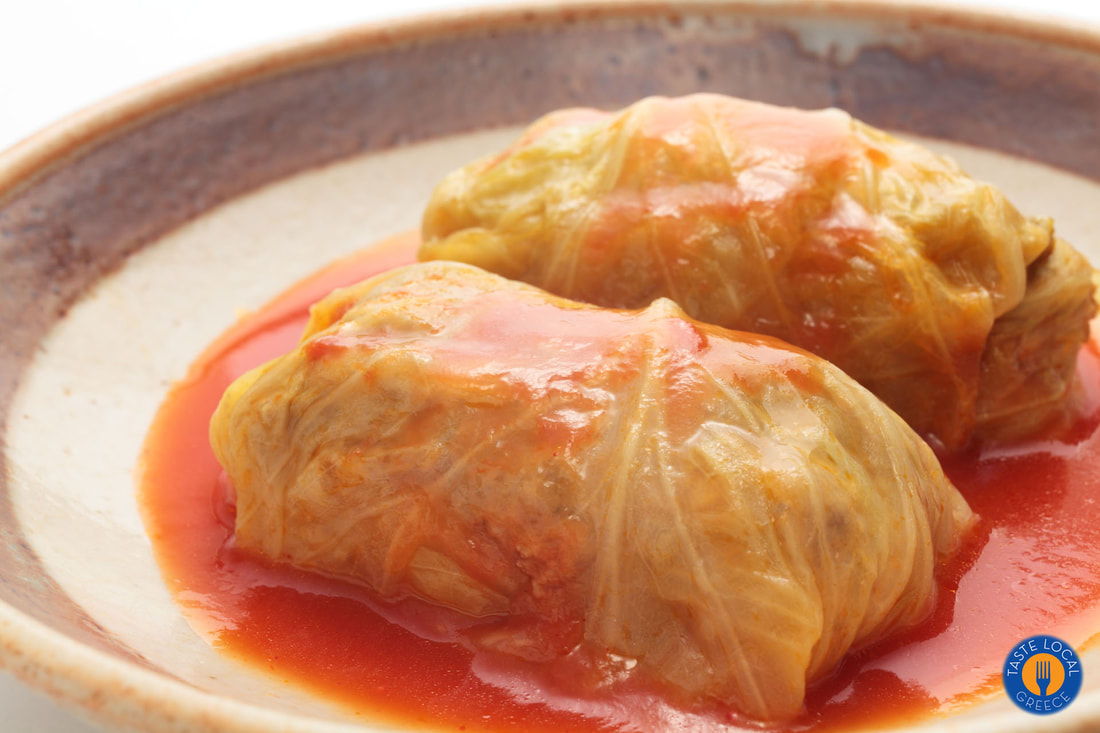
The Variations
There are many differences in recipes, names, ingredients, and influences, depending on the region and the unique characteristics of its people.
Thus, you may encounter them with or without an egg-lemon sauce, known as giaprakia or dolmadakia, wrapped in vine leaves, or as sarmares or sarmades in areas with Pontic roots. Each region gives them its own name, spices, and herbs.
Yet, when we look a little deeper, we notice that the philosophy and the essence of the recipe remain the same everywhere: leaves of cabbage, lettuce, or vine tenderly wrap a filling of minced meat—most often pork, but also at times lamb or beef.
“Dolmas,” meaning stuffed, or “sarmas,” meaning wrapped, trace their roots deep into time, across Eastern Europe, the Balkans, and the lands of Pontus. They also appear in variations with pickled cabbage—or even in simpler forms, such as pork with sauerkraut cooked in a pot. There are also “orphans,” made without meat, just rice, though these rarely appear on a Christmas table. Sometimes they are served with tomato sauce, plain, or even with a mushroom sauce. As we have said, the influences and variations are many.
Lost among all these different kinds of cabbage rolls, I remembered my grandmother Marioutsi, who always added black raisins and toasted pine nuts—a habit she picked up during her short stay in Constantinople. So today, into the classic cabbage rolls you imagine, I too will add a touch of pine nuts and Corinthian black raisins, to honor both family tradition and my childhood memories.
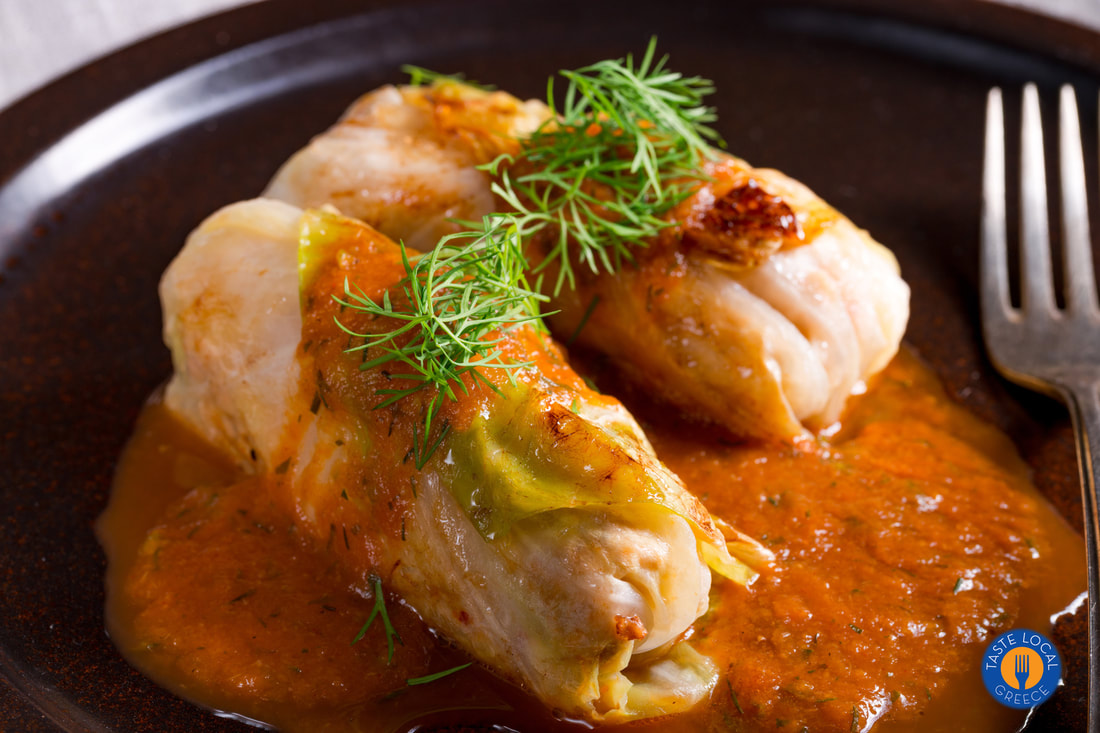
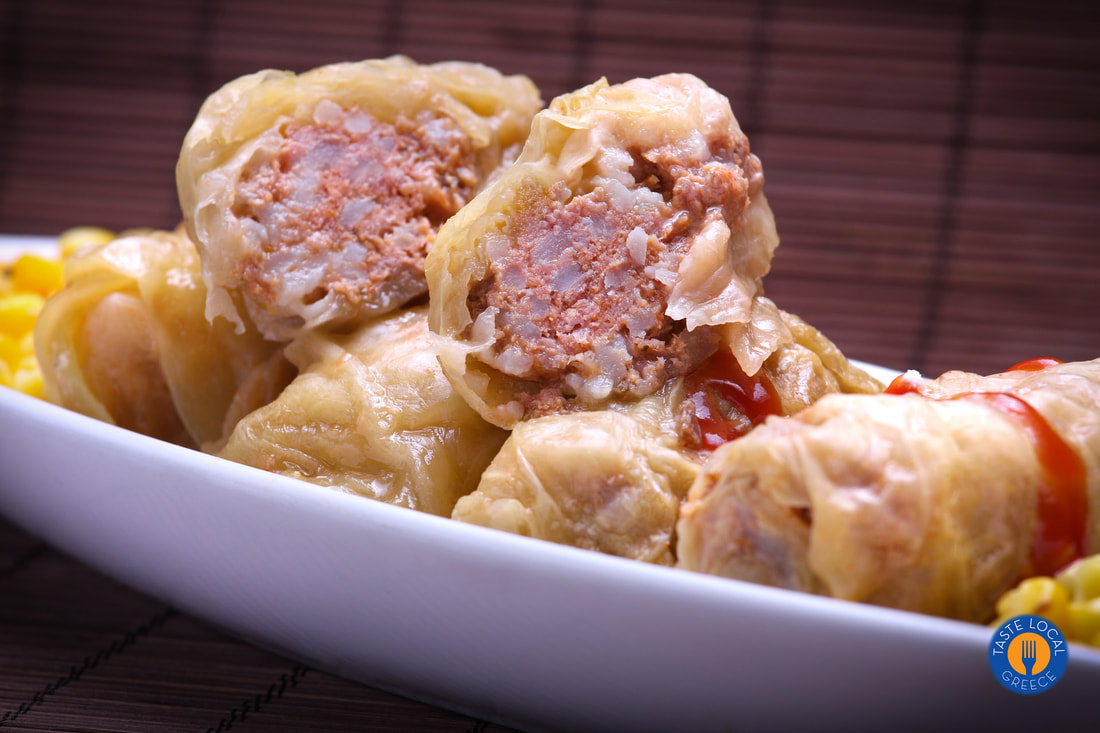
Η συνταγή
My mother never made them with egg-lemon sauce. Instead, she prepared a lemony white sauce, almost like a béchamel—lighter, easier to make, reheated well the next day, and could always be thinned out if needed. My grandmother, on the other hand, never used minced meat. She would make a kind of ragout, chopping the meat finely into small pieces with two knives, her hands moving skillfully until it resembled ground meat. I can almost see her before me now, preparing it in just that way whenever a dish called for “mince.”
And so, cabbage rolls are more than food. They are a bridge across time, connecting generations, regions, and cultures. They are a dish wrapped not only in leaves but in memory, history, and tradition.

Ingredients
1 large cabbage
1 kg ground beef (flank) or mixed with pork
300 g smoked pancetta or bacon
1 cup Carolina rice
4 large onions
4 spring onions
A little garlic (2–3 cloves)
½ cup pine nuts
½ cup black raisins
2 large fresh tomatoes, grated
1 bunch parsley
1 bunch dill
2 tbsp dried mint
½ cup olive oil
Salt and pepper
2 tbsp vegetable shortening (or butter)
About 2 liters beef stock
White Sauce
5–6 cups stock from cooking the cabbage rolls (about 1 liter)
10 heaping tbsp flour
10 tbsp butter
Juice of 3–4 lemons (depending on how lemony you prefer it)
2 eggs + 1 yolk
Salt and white pepper
Instructions
I imagine you have all made this favorite dish at some point and know the technique.
But I will describe it again for the younger ones…
Cut the base from the bottom of the cabbage in a circle and remove the hard part. Place it in a pot and simmer, removing the outer leaves one by one as they soften. Spread them out on a platter.
Roast the pine nuts well and finely chop the onion and herbs.
Mix the minced meat with the onion, herbs, oil, rice, tomatoes, parsley, dill, pine nuts, and raisins. Knead well to combine the ingredients.
Place the mixture in the refrigerator for about half an hour.
When you have finished boiling the dough, begin rolling it out by hand rather than using a machine.
Cut the hard center out of each leaf so that you end up with two leaves. If the leaves are small, join them together to create one large leaf and wrap the filling in it.
Cooking
Once we have wrapped all the dolmades, we are ready to cook them.
Place the pieces of cabbage, i.e. the stalks that we removed, and two or three more sheets at the bottom of the pot. We place the dolmades tightly, wrapping them in layers.
We place a plate on top with a weight on it so that they do not fall apart during cooking.
My mother used to put a “lalaro” on top, as she called it. It was a large white stone from Lalaria beach in Skiathos, which she had brought back from a vacation on the island. She used to put it on top like


White sauce with egg and lemon
Beat the eggs well and season with salt and pepper. Slowly add some of the broth that you kept from the dolmades after letting it cool slightly.
In a saucepan, mix the flour and butter as if making béchamel sauce.
Add the rest of the broth over low heat, then the lemon juice, and after a while, the egg mixture.
Stir continuously until the mixture thickens slightly.
If the sauce is too thick, dilute it with a little broth until it reaches the desired consistency.
Pour the hot sauce over the dolmades on the platter and serve.
And the little secret …
Make a double batch of sauce!
My mother always, always made almost double the sauce because one batch was never, ever enough….

So, stuffed cabbage rolls are a Christmas dish, but also an everyday or Sunday dish!
We serve them on grandma’s old platter along with barrel-aged feta cheese and fresh sourdough bread.
Invite everyone to the family table and enjoy the taste and smiles of happiness…
I tried a different version at Kostas’ restaurant in Kalamata, which is definitely worth trying!
Texts Photos Giorgio Grigor

